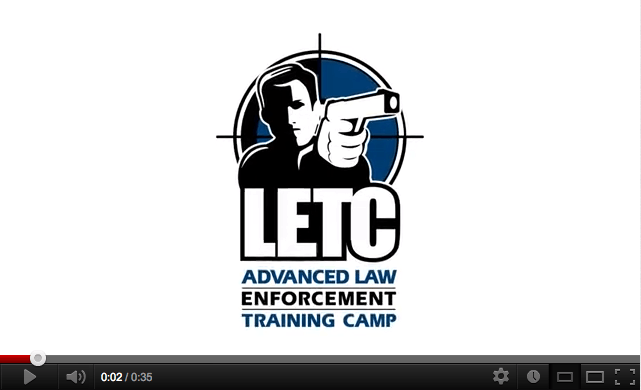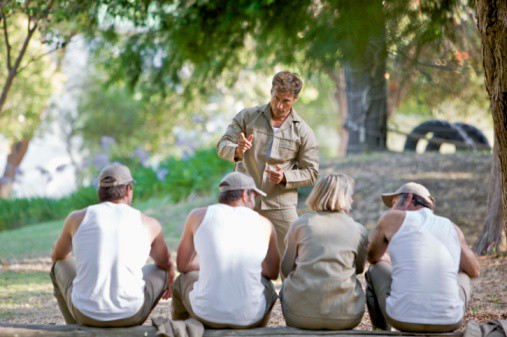BY SGT. BRIAN C. SMITH
Editor’s Note: This article was originally published in S.W.A.T. magazine in September 1999. The views in this article are the author’s own and don’t necessarily represent those of Action Target, Inc.
Over the years, I have trained many police and private security officers in tactical-team operations. I find that the most difficult phase of the training class is the beginning, where I stress teamwork to a group of individuals who are reluctant to cooperate during the first phase of training. This can be due to a lack of familiarity with the other participants in the class, a lack of experience with team concepts, or individual ego problems.
When the topic of teamwork comes up, my first thought, like that of most other people, is of athletic teams, such as basketball and football. My conceptualization of exactly what a team is became somewhat more enlightened when, recently, I watched a team of fire department paramedics work frantically to treat a gunshot victim on a police call that I responded to. The medical jargon, coordination, and smooth choreography of their actions while using their emergency equipment, were a strong indication that they had practiced this scenario before. This incident prompted me to inquire about how often firefighters from several different fire departments trained together to prepare for a crisis. To my surprise, they trained as a team more often than the patrol division of the police department in my area. At the police agency where I’m employed, a five-minute roll call is not sufficient time to discuss topics of survival or practice a tactical scenario that the officer might encounter during his tour.
I also recently attended a circus with my two-year old daughter and watched the high-wire event, where an acrobatic team of four balanced themselves on one bicycle and rode on a tightrope from one platform to another without a mishap. This feat could not have been accomplished without many hours of practicing together as a team, bringing all the principles of teamwork into play. These principles are referred to as The Three C’s: Communication, Coordination, and Cooperation.
Our team’s philosophy of team-building, attempts to phase out the individual mind-set and bring all the members of the team together as one to complete a difficult task. The team members must have confidence that each member will do his part in any given assignment. Each member must know his individual responsibility and what is expected of him in order to perform the task successfully.
Communication is extremely important; a team, organization, or group cannot operate efficiently without communication. This can take the form of verbal or written communication, hand signals, or facial expressions, and must be comprehended by everyone involved to be effective. Coordination follows when each person is assigned a responsibility and performs when expected to. Cooperation is the final step in this team-concept triad. Here, everyone involved is willing to perform and participate.
Discipline is another concept that helps develop team camaraderie during the introduction of the class. A series of guidelines is presented to the group, along with the degree of discipline the group will endure as a whole. In our tactical-team training class, violation of any stipulation in the guidelines would result in a maximum of five push-ups, depending on the severity of the violation.
It’s inevitable that, at some point, someone in the group will commit an infraction for any number of reasons, and, as the group is subject to serving its punishment, one can see the camaraderie developing and the group coming together as a team.
Provided in this article is a low-cost program of team-building events that has proved effective and beneficial in our tactical-team training. It has also been helpful for other types of groups that aim to create a team mind-set among their members, and can, likewise, do the same for your team. The objective of these exercises is to enhance planning, coordination, and communication. This will also create confidence and trust among team members and is what makes the difference between a mere group of individuals and a real team.
LIVE-WIRE EVENT
- Details: Must get the entire team inside the three-sided structure without touching the ropes or poles. Once inside the structure, the entire team must exit again without touching the structure.
- Penalty: If any team member touches any part of the structure, the team must start the entire exercise from the beginning.
- Equipment: Rope, dowel rods, and tent stakes. Structure is in a triangular formation.
CONFIDENCE FALL
- Details: A member stands on a ladder or platform at an estimated height of four feet. The remaining members must form a human net to catch the person falling backward. Note: the faller must put his hands in his trouser pickets, as a safety precaution, to prevent members of the human net from being struck in the face during the fall. The faller must alert the human net when he is ready to start so that they are prepared to catch him. The participants should be advised not to make jokes about not catching the faller due to the anxiety this creates. Such negative comments could prove to be counterproductive.
- Penalty: If the faller bends at the waist as he falls, this reflects a lack of confidence and trust in the team, they must repeat the exercise.
- Equipment: Stepladder or stationary platform.
BLINDMAN’S SOCCER
- Details: The group is divided into two teams, which are distinguished by colored bandannas; these are also used as blindfolds. One member is selected from each of the two teams to post as the blindfolded player, and one member from the same team is designated to give voice commands for the player to follow on where to kick the ball.
- Penalty: Player must remain blindfolded while the exercise is in session or forfeits the game.
- Equipment: Soccer ball or equivalent and bandannas of two different colors to blindfold the players.
LOG MOVEMENT
- Details: With a regimented effort, the team must move an eight-foot, 4″x 4″ wood beam with 16 feet of heavy rope that is tied at both ends of the beam. This exercise cannot be completed until the team comes together as one, which sometimes takes a while. You will witness frustration at the start of this event. The maximum number of members on a beam is ten; the minimum is four. Each member faces the same direction with the same foot resting on the beam, and the rope must rest over the same shoulder. The members must move the beam a distance of 75 feet without their hands, then, on command of the instructor, switch positions, facing the opposite direction with the opposite foot on the beam and the rope resting on the opposite shoulder. The team then proceeds back to the starting point.
- Penalty: Should any member’s foot come off the beam or the rope come off the shoulder, the team must return to the starting point.
- Equipment: One eight-foot 4″ x 4″ wood beam per ten people and one 16 foot rope per team.
BALANCE-BEAM SHUFFLE
- Details: Six to eight members line up randomly on a eight-foot, 6″x 6″ wood beam or railroad tie. Each person faces in the opposite direction of the person beside him. Without verbal communication or stepping off the beam, the members are to determine who’s the oldest and youngest, then maneuver their positions so that the oldest person is at a designated end of the beam, with the younger members following in sequence to the opposite end.
- Penalty: If any member’s foot touches the ground or if he makes any verbal sounds, all team members must stop and return to their original positions.
- Equipment: One eight-foot, 6″x 6″ wood beam or a railroad tie per six to eight team members.
BLINDMAN’S FORMATION LINE
- Details: The team is instructed to line up and sound off in numerical order. An area, such as a wall or fences, is designated as the starting point, where the team is to line up in sequence perpendicular to the starting point in the same numerical order. The members are blindfolded and spread out, then given the command to start. Without verbal communication, the members are to find the starting point and then line up in order. The first attempt will appear chaotic, but if the team is allowed to orchestrate a plan just prior to the second attempt, this exercise will appear a lot less complicated.
- Penalty: If any verbal comments are made or if anyone removes his blindfold, the exercise is stopped and resumed from the beginning.
- Equipment: Cloth bandannas to use as blindfolds.
BLINDMAN’S CONFIDENCE RUN
- Details: One member is blindfolded and positioned to run toward a fixed structure (such as a wall or fence) from a distance of approximately 50 feet. The remaining team members are to line up in front of the structure to catch the runner and prevent the runner from colliding with the structure. No verbal sounds are to be made by the team so that the runner isn’t able to judge distance when approaching the structure.
- Penalty: If the runner slows down prior to approaching the structure, this indicates a lack of trust or confidence in the team, and the exercise must be repeated.
- Equipment: One bandanna to blindfold the runner.
About the Author
Captain Brian C. Smith is a 28-year veteran of the Chicago Heights Police Department and is currently serving as Commander of Training and Special Operations. He has 21 instructor certifications and four armorer certifications. Captain Smith has an associate degree in law enforcement from Thornton Community College and graduated from tile 184th session of the FBI National Academy. He is member of the Illinois Tactical Officers Association, National Tactical Officer Association, ASLET, IALEF, and the American Federation of Police and Concerned Citizens, where he serves as Chairman of the Survival Tactics Committee.
—————-
LETC 2012
For over 20 years, Action Target has been holding the Law Enforcement Training Camp (LETC) to help law enforcement departments across the nation get the quality firearms training they need and deserve. This year’s LETC will be held September 10-14 in Utah County.
The registration form for LETC can be found at https://www.actiontarget.com/calendar under the “More Info” column for Sept. 10-14. Instructions on how to submit your registration can be found at the bottom of page.
Registration will be reserved for the first 160 applicants, so apply today!








